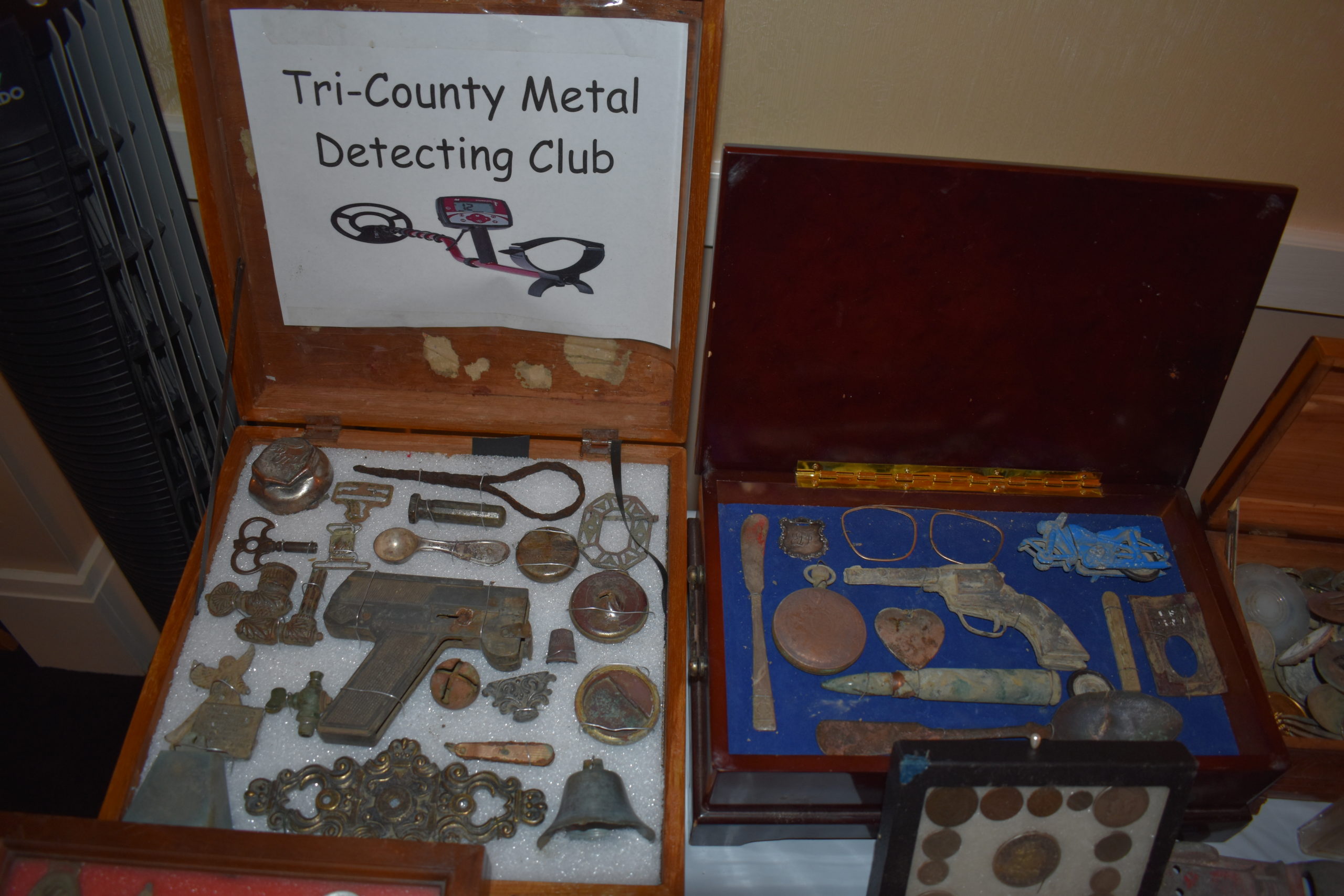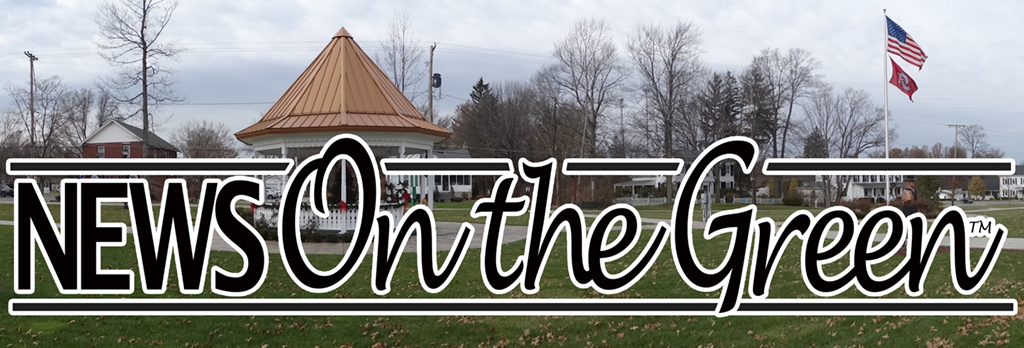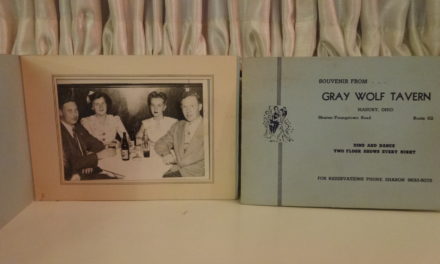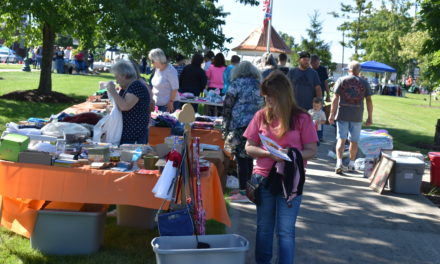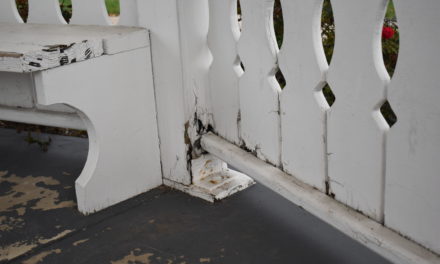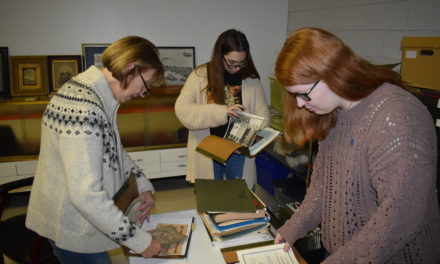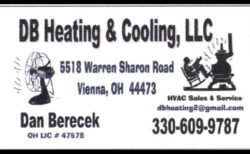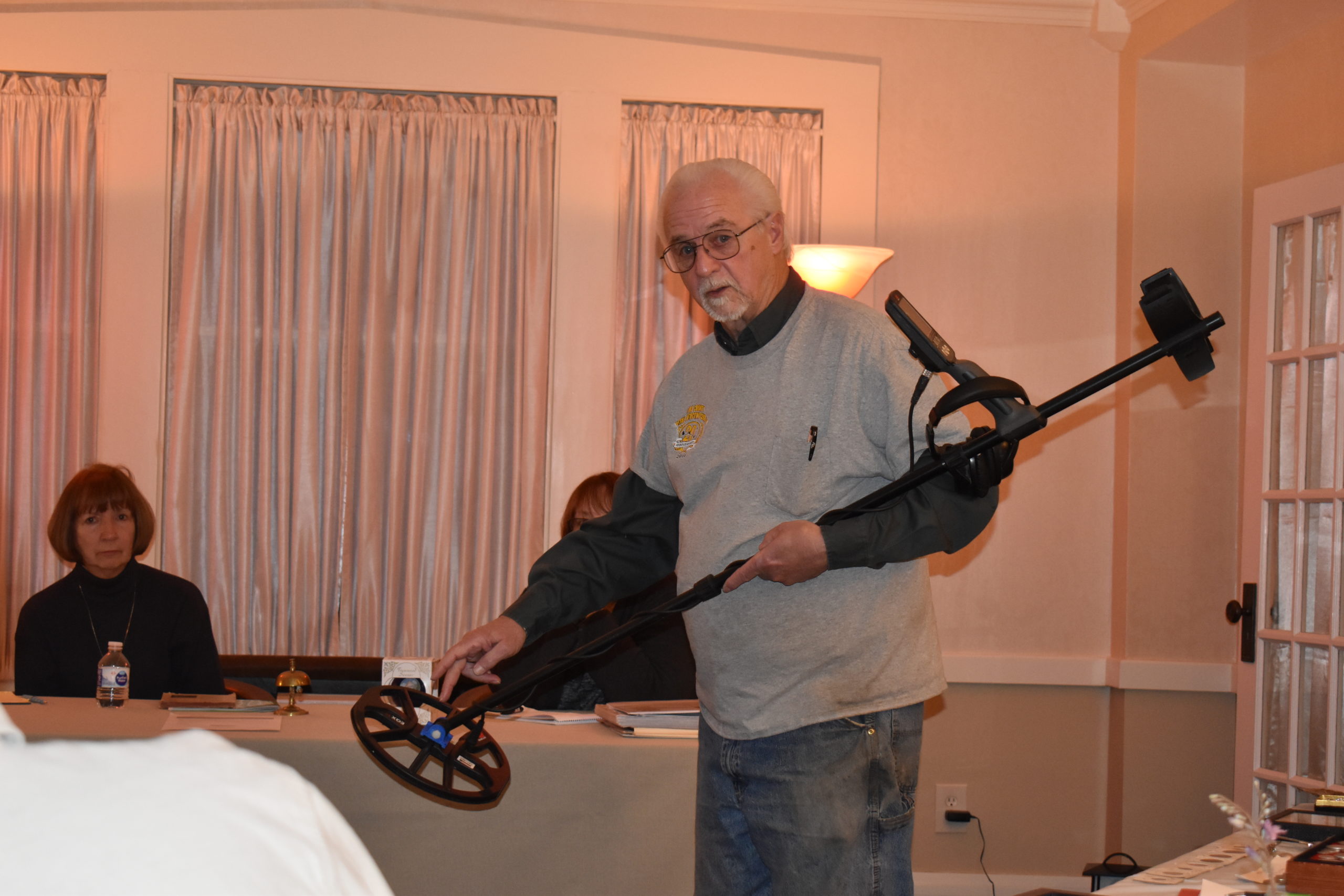
Jesse James shows how a metal detector works at the Feb. 13 meeting of the Brookfield Historical Society.
Tom Cornelius was walking with a metal detector on the west side of Route 7, across the street from what was the Tool Shed in Brookfield, when he hit upon a small, flat piece of metal.
The Masury resident was pretty sure it was the heel plate from a lady’s shoe and was pretty old, but wondered about the shape that was cut out of the center of it: a club from a deck of cards.
Cornelius, a member of the Tri-County Metal Detecting Club, showed the plate to Jesse James, who has decades more experience with metal detecting.
“(James) said, ‘You found a hooker’s heel plate,’” Cornelius said at the Feb. 13 meeting of the Brookfield Historical Society.
“If you research the history of prostitution, in the 1800s, there were no paved streets,” Cornelius said. “The prostitutes would wear these heel plates with the punching out of them so that a traveler coming through could literally follow the prints in the dirt to know who to approach.”
That made sense with what he knew about the area where he found the plate, Cornelius said. There was a coal mine entrance nearby, a row of houses and company housing.
“When they left the mines, they got paid in gold and cash,” Cornelius said. “These houses were probably gambling, prostitution, there was a jail and a saloon, and they had to pass these houses before they could get to their company housing. How it ended up there probably was not a surprise.”
Sure, members of the club said, they occasionally find things of value – James displayed a platinum ring with diamonds and sapphires that has been appraised at $5,500 – but it’s the items of little practical value that often make that hobby one worth pursuing.
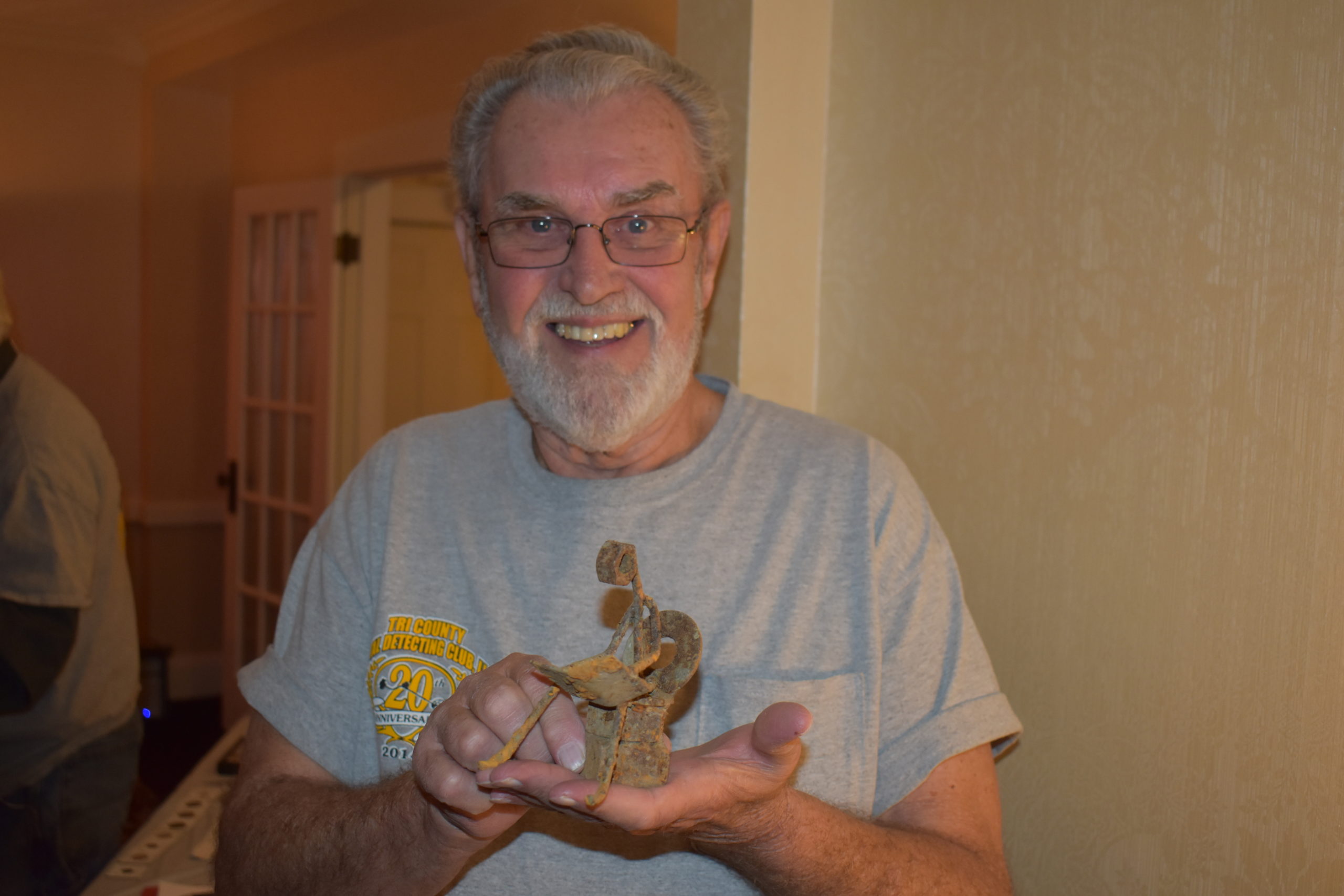
Joe Detelich holds a scrap metal sculpture of a man on a toilet that he found while metal detecting.
“The thing I personally like best about this is the history,” said James, of Cortland. “Most of us don’t sell the things that we find. We like to share it with people, especially people interested in history.”
As Cornelius’ story illustrates, the finders don’t always know right away what they have found, and turn the item into a research project.
Cornelius said he uncovered a little piece of aluminum on the Shull farm on Warren Sharon Road, across from Yankee Run Golf Course, that he initially planned to throw away. But, when he cleaned it up a little bit, he found writing – “Eva H. Byers, Sharon, Pa.”
His research showed that Byers had run Riverview Dairy Farm on that property.
“She’s the one who sold it to the current owner’s great-grandfather,” Cornelius said.
When he turned over what he believes to have been a cow’s ear tag to a member of the Shull family, “she (Geraldine Bricker) was just amazed and tickled that she had this key to their property’s history,” Cornelius said. “That is one of my favorite finds.”
Metal detectors shoot radio waves into the ground. Their ability to find metal objects varies according to the sensitivity of the detector, the size of the object, the position of the object in the ground and the amount of moisture in the ground.
“Over a period of time, you learn your detector,” said James, who recommended getting a good detector, even if you’re just starting out. He said the good ones start at about $200.
 Club members brought items they had found, from coins and jewelry to ammunition, toys, non-metallic objects that were buried with metallic ones, locks, watches, tableware, eyeglass frames and tools.
Club members brought items they had found, from coins and jewelry to ammunition, toys, non-metallic objects that were buried with metallic ones, locks, watches, tableware, eyeglass frames and tools.
“It’s amazing the history that you can get that’s in the ground,” Cornelius said.
The club has about 135 members – about one-fourth of whom are women. It typically meets the third Tuesday of each month in Austintown, but is on hiatus because of the COVID-19 pandemic.
